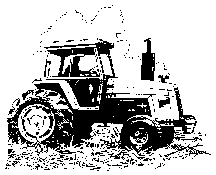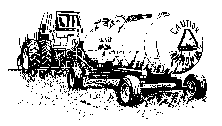Oklahoma
State University, Extension Agricultural Engineering, 214
Agricultural Hall, Stillwater, Oklahoma 74078, (405) 744-5425

| It's
better to be safe than sorry! We can't begin to list them
all, but here are a few simple safety tips.
|
|
|
|
|
 |
|
|
|
 |
|
|
Farming Can Be Dangerous To Your Health!

Technical
support provided by
Pat Lewis, M.S.
Extension 4-H and Safety Specialist
Oklahoma State University
and
H. Willard Downs, Ph.D.
Assist. Dir. of Extension Programs
University of Missouri
Funding
provided by
The National Institute for Occupational Safety and Health
Publication #: #1081 0991
Oklahoma Cooperative Extension Service does not discriminate because of race. color, national origin. religion. sex. age. or handicap and is an equal opportunity employer. issued in furtherance of Cooperative Extension work acts of May 8 and June 30. 1914. in cooperation with the U S Department of Agriculture. Charles B Browning, Director of Cooperative Extension Service. Oklahoma State University. Stillwater, Oklahoma This publication i s printed and issued by Oklahoma State University as authorized by the Dean of the Division of Agriculture Sciences and Natural Resources and has been prepared and distributed at a cost of $292.82 for 5,000 copies.
Disclaimer and Reproduction Information: Information in NASD does not represent NIOSH policy. Information included in NASD appears by permission of the author and/or copyright holder. More